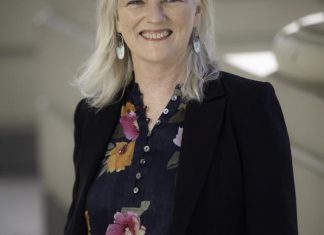ROCK superstar David Bowie has challenged social conventions from his first hit “Space Oddity” to his long-haired “Labyrinth” phase – raising issues of gender, sexuality, race and class while constantly reinventing himself.
Deakin University lecturer Dr Toija Cinque says the chameleon-like pop icon belongs in a category all his own. For her, Bowie represents an “outsider who captures the essence of the contemporary world”.
“Bowie himself has said he is like a photocopier, depicting and reflecting the world around him,” she said.
Associate Professor Sean Redmond describes Bowie’s work as “reaching out into worlds utterly strange, but always enchanting, his songs and performances challenging us to exist in the world differently.”
Toija Cinque and Sean Redmond, both from Deakin’s School of Communication and Creative Arts, along with University of Wollongong’s Dr Christopher Moore are about to launch a book “Enchanting David Bowie: Space, Time, Body, Memory” at a two-day David Bowie symposium to be held at the Australian Centre for the Moving Image (ACMI) in mid-July.
The book covers topics ranging from Bowie alter-ego Ziggy Stardust’s urban alienation, to the transformative journey of Major Tom, to the influence of Berlin on Bowie’s artistic expression.
Leading experts from around the world have provided chapters, including Dr Ian Chapman, from the University of Otago, NZ, who has written a definitive David Bowie “Listeners’ Companion.”
Sean Redmond first encountered Bowie’s music, on the cusp of being a teenager, in a run-down part of Coventry in the UK, where he grew up. “Bowie’s alter-egos and dramatic compositions allowed me to escape the poverty I was experiencing at the time and take flight. Bowie was a conduit for many young people to assess their own identities,” he says.
Toija Cinque has also been a Bowie fan from a young age and is delighted to have been able to use his work “as a prism through which to study broader popular culture”.
“The strangeness of his music and sometimes jarring lyrics have always fascinated me – and prompted me to consider the existential questions that his performances raise,” says Dr Cinque.
She argues that, while Bowie has been a chameleon throughout the decades, David Jones — Bowie’s real name — has been consistent and highly conscious of the Bowie characters he has created.
The book suggests that Bowie challenges audiences to critically question “sanity, identity and essentially what it means to be ‘us’ and why we are here”.
Its four themes: space, time, body and memory, “literally and metaphorically address the key questions and intensities of his output,” which crosses many platforms, “including theatre, film, television, the web, exhibition, installation, music, lyrics, video and fashion”.
Sean Redmond argues that it is this movement in and across artistic forms that has enabled Bowie to uniquely straddle the art-popular culture nexus, making him the most important cultural figure of his generation.
Toija Cinque explained that the launch of Bowie’s critically-acclaimed 2013 album “The Next Day”, after a gap of 10 years, contributed to a burst of academic interest in the artist, including a summer school at the University of Otago earlier this year held by Dr Chapman.
“Enchanting David Bowie” will be launched at the Deakin / ACMI conference, “The Stardom and Celebrity of David Bowie”, which coincides with the global touring exhibition “David Bowie Is” at ACMI.
The symposium will feature a line-up of international experts – and Australian musician Robert Forster will provide a keynote address. It will cover topics ranging from Bowie’s music, screen presence and chameleon-like qualities, to his contributions to fashion, gender and subculture.
It will also feature several creative workshops, and musical performances, from opera singer Marco Cinque, to the “Thin White Ukes.”








